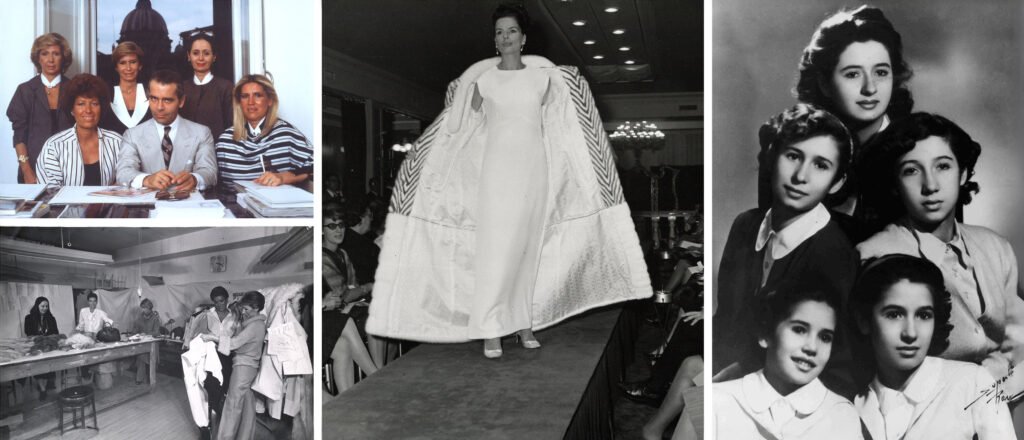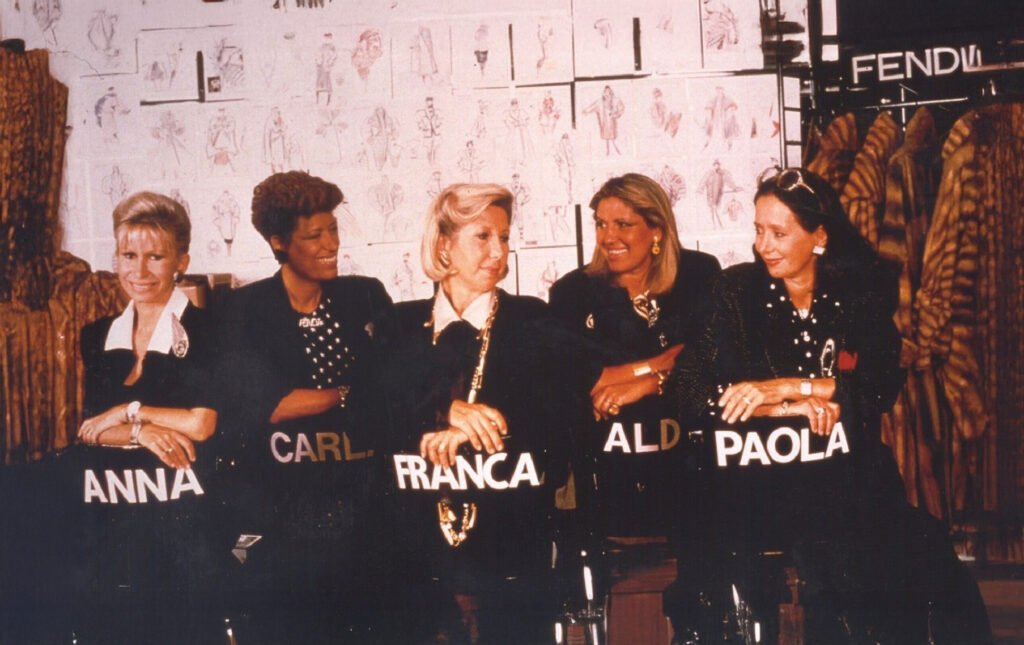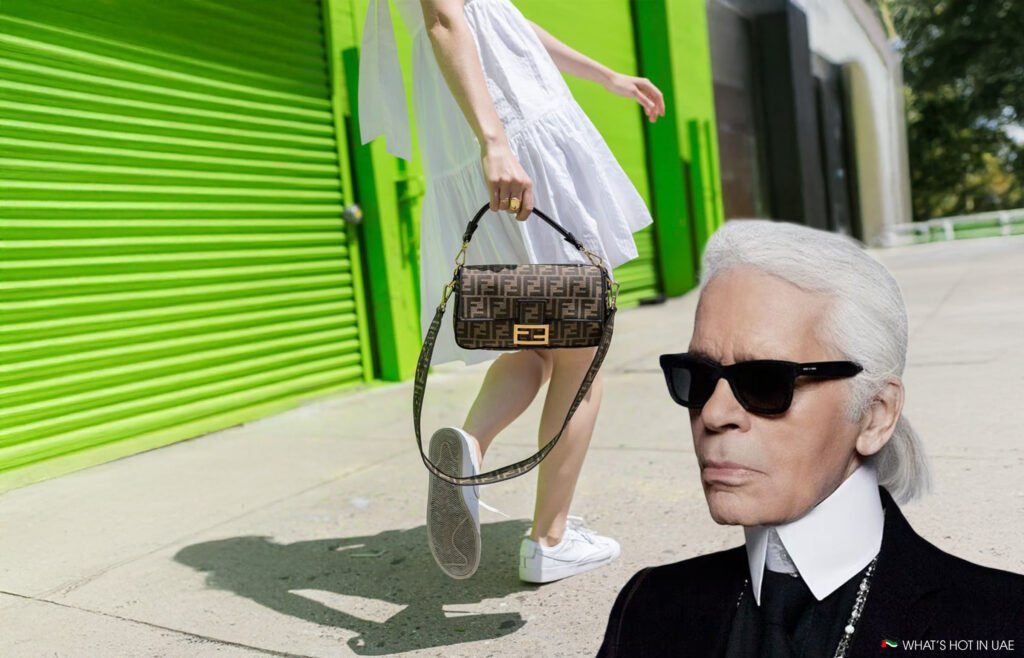From the cobblestoned streets of Rome to the glittering skylines of Dubai, few names command the same reverence in luxury fashion as Fendi. For nearly a century, its interlocking ‘FF’ logo has signified more than just opulence; it represents a legacy of daring innovation, unparalleled craftsmanship, and an unbreakable family bond. Yet, trying to grasp the full Fendi brand story can feel like assembling a puzzle with missing pieces. You find fragmented timelines and brief summaries, but the true narrative—the soul of the brand—remains elusive. This is not another dry timeline. This is the definitive history of Fendi, a deep dive that unravels its 100-year dynasty through the three pillars of its enduring success: the powerful Fendi women who guided its destiny, the deep Roman heritage that shaped its DNA, and the relentless innovation of Karl Lagerfeld that catapulted it into the stratosphere.
From a humble fur and leather workshop in 1925 to its status as a global cultural phenomenon, we will connect every iconic moment to tell the complete Fendi history.
The Fendi Brand Story at a Glance: An Interactive Timeline
Before we delve into the rich narrative, here is a visual overview of the most pivotal moments in Fendi’s evolution. This timeline captures the key milestones that transformed a small Roman boutique into a global fashion powerhouse, from its founding to the creation of its most iconic bags and the arrival of visionary designers who would shape its future.
- 1925: The Beginning – Adele & Edoardo Fendi open their first handbag shop and fur workshop on Via del Plebiscito in Rome.
- 1946: The Second Generation – The five Fendi sisters—Paola, Anna, Franca, Carla, and Alda—join the family business, each taking on a key role.
- 1965: The Lagerfeld Era Begins – A young German designer named Karl Lagerfeld is hired, beginning a revolutionary 54-year collaboration.
- 1966: The ‘FF’ Logo is Born – Lagerfeld sketches the iconic ‘Zucca’ logo in seconds, originally standing for “Fun Furs.”
- 1997: An Icon is Created – Silvia Venturini Fendi, daughter of Anna, designs the legendary Baguette bag, sparking the ‘It’ bag phenomenon.
- 2001: The LVMH Acquisition – Global luxury group LVMH becomes the majority shareholder, fueling Fendi’s international expansion.
- 2007: A Global Spectacle – Fendi stages a breathtaking fashion show on the Great Wall of China, one of the most iconic in history.
- 2020: A New Chapter – Kim Jones is appointed Artistic Director of Couture and Womenswear, joining Silvia Venturini Fendi at the creative helm.

The Roman Origins: How a Small Fur & Leather Shop Became a Dynasty (1925)
The Fendi brand story begins in the heart of the Eternal City. In 1925, a young couple named Adele and Edoardo Fendi opened a small boutique on Via del Plebiscito in Rome. This was not just a shop; it was a fur and leather workshop, a place where the commitment to exquisite materials and meticulous craftsmanship was established from day one. In the bustling post-war Rome of the 1920s, a city rediscovering its glamour, the Fendi atelier quickly gained a reputation among the Roman bourgeoisie for its high-quality leather goods and beautifully crafted furs. This deep-rooted connection to Roman artistry and the “Made in Italy” ethos would become the foundational DNA of the brand, a heritage that continues to influence its designs a century later.

The Fendi Matriarchy: The Five Sisters Who Built an Empire
Following the death of Edoardo Fendi in 1954, the brand’s future rested on the shoulders of the next generation. His five daughters—Paola, Anna, Franca, Carla, and Alda—stepped in to run the family business. In a move that was revolutionary for its time, they established a powerful matriarchy, with each sister assuming responsibility for a different aspect of the company.
Paola became the fur expert, Anna focused on leather goods and accessories, Franca managed customer relations, Carla coordinated the business, and Alda was in charge of sales. This unique, female-led powerhouse was the driving force behind Fendi’s initial international expansion. Their most pivotal decision came in 1965 when, together, they hired a promising young designer from Germany named Karl Lagerfeld. It was a move that would not only change Fendi forever but also alter the course of fashion history.
The Lagerfeld Revolution: 54 Years of ‘Fun Fur’ and Fearless Innovation (1965-2019)
Karl Lagerfeld’s arrival at Fendi marked the beginning of a creative explosion. His collaboration with the house would span an incredible 54 years, the longest partnership in fashion history between a designer and a Maison. Lagerfeld’s mission was to completely reinvent fur, transforming it from a heavy, bourgeois status symbol into something modern, light, and playful. He introduced the concept of “Fun Fur,” experimenting with revolutionary techniques to shear, dye, and manipulate pelts in ways no one had ever imagined.
In 1966, during one of his first meetings, Lagerfeld famously sketched the brand’s iconic ‘double F’ logo—also known as the Zucca—in just a few seconds. The interlocking letters stood for “Fun Furs,” a perfect emblem for his radical new vision. Under his guidance, Fendi launched its first ready-to-wear collection in 1977, solidifying its transition from a specialized furrier to a comprehensive luxury fashion house.

The Rise of the ‘It’ Bag: How Fendi Defined an Era
While fur was Fendi’s foundation, it was the brand’s mastery of leather goods that cemented its place in popular culture. In the late 1990s, Fendi was at the forefront of a movement that elevated handbags from simple accessories to “must-have, cult-status symbols”. This new era was spearheaded by a third-generation member of the founding family, Silvia Venturini Fendi, who continues the family’s creative legacy. Her creations, particularly the Baguette and the Peekaboo, became cultural touchstones. The historical and cultural significance of these pieces is so profound that you can find examples of Fendi Designs at The Met, preserved as objects of art.

The Baguette: More Than a Bag, a Cultural Icon
Designed by Silvia Venturini Fendi in 1997, the Baguette was a compact, minimalist bag meant to be carried under the arm like its namesake French loaf. It was an instant success, but its ascent to legendary status was supercharged by its frequent appearances on the influential TV show Sex and the City. When Sarah Jessica Parker’s character, Carrie Bradshaw, famously declared, “It’s not a bag, it’s a Baguette!”, the bag became a global phenomenon. It is widely credited as the first “It” bag, and its enduring legacy was celebrated with a star-studded 25th-anniversary show in New York City in 2022, proving its timeless appeal.
The Peekaboo: A Modern Classic of Quiet Luxury
In 2008, Silvia Venturini Fendi introduced another icon: the Peekaboo. In contrast to the logo-heavy trends of the time, the Peekaboo represented a shift towards quiet luxury. Its genius lay in its construction—a structured exterior that, when unclasped, revealed a soft, drooping inner partition, often in a contrasting color or exotic material. The bag’s appeal was its subtlety, its focus on impeccable craftsmanship, and its playful “peek” of a hidden interior. Fashion critics and editors lauded it as a modern classic, a testament to Fendi’s ability to capture the zeitgeist while creating pieces that transcend trends.
The LVMH Era: Global Powerhouse and Modern Legacy
As the new millennium dawned, Fendi underwent another monumental transformation. In 2001, the French luxury conglomerate LVMH (Moët Hennessy Louis Vuitton) became the majority shareholder, providing the investment and global infrastructure to propel the brand to new heights. This move solidified Fendi’s position as a top-tier global luxury powerhouse, accelerating its retail expansion and amplifying its worldwide presence. You can learn more about the brand’s current corporate structure on Fendi’s Official LVMH Profile.
Today, the house continues to honor its heritage while pushing forward. Fendi’s headquarters are located in the Palazzo della Civiltà Italiana in Rome, a striking architectural landmark that serves as a powerful symbol of the brand’s enduring connection to its Roman roots. The creative direction is now a dual effort: Silvia Venturini Fendi continues to lead accessories and menswear, while Kim Jones has served as the Artistic Director of Couture and Womenswear since 2020, bringing a fresh perspective that respects the brand’s storied past.

Fendi in the UAE: A Legacy of Luxury in the Middle East
In the UAE, a region with a deep appreciation for luxury and craftsmanship, Fendi has found a devoted following. The brand’s blend of bold Italian glamour and sophisticated artistry resonates strongly with the local aesthetic. Flagship boutiques in premier locations like The Dubai Mall and Mall of the Emirates are more than just stores; they are immersive experiences that showcase the full breadth of the Fendi universe, from ready-to-wear and iconic handbags to menswear and home décor. Fendi’s presence in the UAE is a testament to its global appeal and its ability to connect with discerning clients who recognize the brand not just for its logo, but for the century of history, family, and innovation woven into every stitch.
Conclusion: A Story Still Being Written
The history of Fendi is a rich tapestry woven from three essential threads: the unwavering vision of its founding family, the profound influence of its Roman heritage, and the fearless creativity of its designers. It is a story of a powerful matriarchy that built an empire, of a creative genius who redefined a material, and of iconic designs that captured the hearts of generations. From Adele and Edoardo’s small workshop to the global stage, Fendi has never lost sight of the core values that defined it in 1925: a commitment to craftsmanship, a love for bold innovation, and the enduring power of family.
As Fendi embarks on its next century, its legacy is not just preserved in archives but is alive on the streets of Dubai, Paris, and Rome. To truly understand the brand, we invite you to visit a boutique in the UAE and experience this living history for yourself.
What is your favorite Fendi moment or design? Share it in the comments below.
References
- LVMH. (n.d.). Fendi, high end ready-to-wear – Fashion & Leather Goods – LVMH. https://www.lvmh.com/houses/fashion-leather-goods/fendi/
- Women’s Wear Daily. (2016). Fendi at 90: A Look Back at the Roman House’s Big Moments. https://wwd.com/fashion-news/designer-luxury/fendi-at-90-a-look-back-at-the-roman-house-s-big-moments-10478052/
- Cooper Hewitt, Smithsonian Design Museum. (2020, March 13). Fendi “Baguette” bag, 1997–2000. https://www.cooperhewitt.org/2020/03/13/fendi-baguette/



